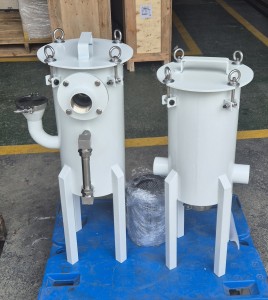In vacuum system applications, the selection of intake filters directly impacts equipment operational efficiency and service life. Oil bath filters and cartridge filters, as two mainstream filtration solutions, each possess unique working characteristics and suitable application scenarios. This article provides an in-depth analysis of the technical features of these two filter types, offering users a scientific basis for selection.

Fundamental Differences in Working Principles of Oil Bath Filters and Cartridge Filters
Oil bath filters employ liquid phase filtration mechanism, with their working process comprising two critical stages: First, the dust-laden airflow impacts the oil surface at specific angles, where larger particles are directly captured by the oil through inertial effects; subsequently, the airflow carries oil droplets through specially designed separation elements, forming an oil film for secondary capture of fine particles. This unique working principle makes them particularly effective when handling high-flow, high-concentration dust.
In contrast, cartridge filters utilize dry filtration methods. Their core technology relies on precision-engineered filter materials (such as composite non-woven fabric, or metal sintered mesh) to directly intercept particles. Modern filter cartridges employ multi-layer gradient filtration structures, where the surface layer captures larger particles, while the inner layers trap sub-micron particles through mechanisms including Brownian diffusion and electrostatic adsorption.
Comparative Analysis of Performance Characteristics of Oil Bath Filters and Cartridge Filters
In practical applications, oil bath filters demonstrate significant advantages: their dust holding capacity can reach 3-5 times that of conventional cartridges, making them particularly suitable for high-dust environments like cement and metallurgy industries; metal construction design enables them to withstand harsh conditions including high temperature and humidity; unique self-cleaning characteristics can substantially extend maintenance intervals. However, their limitations are equally apparent: potential oil mist carry-over risks, strict requirements for installation position, and relatively high initial investment.
The advantages of cartridge filters are manifested in: filtration precision reaching 0.1 micron, effectively protecting precision vacuum systems; modular design enables quick and easy replacement; oil-free characteristics completely eliminate secondary contamination. Their disadvantages include: limited dust holding capacity, requiring frequent replacement when dust concentration exceeds 30mg/m³, and relatively high long-term usage costs.
Application Scenario Selection Guide Between Oil Bath Filters and Cartridge Filters
For typical high-dust environments such as wood processing and foundry workshops, oil bath filters are recommended. Actual application data from a casting enterprise shows that after implementing oil bath filters, the vacuum pump overhaul period extended from 6 months to 18 months, with annual maintenance costs reduced by 45%.
In environments requiring high cleanliness levels, such as electronic manufacturing and laboratories, cartridge filters hold more advantages. Particularly special cartridges using flame-retardant filter materials and anti-static designs can meet specific requirements in explosion-proof areas.
Conclusion: Filter selection should be based on comprehensive technical and economic analysis. Users are advised to evaluate from multiple dimensions including dust characteristics, operation regime, maintenance capability, and cost budget to select the most suitable filtration solution. When decision-making proves difficult, considering composite filtration systems may provide optimal comprehensive benefits. (Use oil bath filtration for primary treatment at the front end, coupled with high-efficiency cartridges for fine filtration at the rear end, leveraging both the high dust holding capacity of oil bath filters and the high precision of cartridge filters.)
Post time: Oct-14-2025







